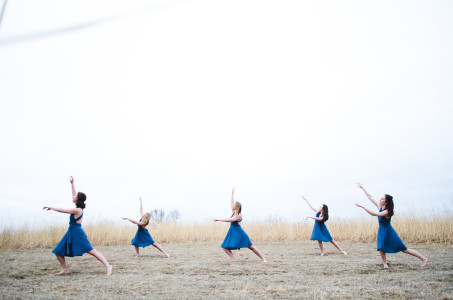
LILY BÖHLKE, Copy Editor
bohlkeli@grinnell.edu
Over 100 institutions will create a “movement choir” this weekend, simultaneously performing at 3 p.m. Central Time on Saturday, April 16 to bring awareness to U.S. water issues. Ivy Kuhn ’16, as well with many other choreographers across the country, has created a site-specific performance to bring communities together.
The National Water Dance (NWD) came to fruition after a huge success with the Florida Waterways Dance Project in 2011. The National Water Dance in 2014 confirmed the importance of a commitment to dance and the environment.
“As dancers we want to use our bodies to create a community that cries out for action,” wrote the NWD team on their website.
Kuhn has choreographed Grinnell’s dance as part of a Mentored Advanced Project (MAP) with her advisor, Professor Celeste Miller, Theatre and Dance. Kuhn has chosen the Conard Environmental Research Area (CERA) as the site for the dance.
After studying different forms of dance abroad in London and Southern India, Kuhn got involved with NWD because of her interest in somatic dance and choreography — how one’s internal body interacts with external forces.
“I was interested in dancing through breath and contact — a really intentional awareness,” Kuhn said. “In the fall I was dancing out in nature by myself doing different prompts and other things to look at body awareness in nature.”
She chose CERA as her choreography site because of the connection between the prairie and Midwest water use.
“There aren’t as many people involved in the Midwest as there are on the coasts,” she said. “I was thinking about how water [in areas with an] extensive root system is able to sink and really hold on instead of flood.”
Kuhn’s goal with this project is to bring awareness to NWD’s goals as well as have an intentional experience in a specific site with the local community.
“[It is to] involve the community in a way to promote dance as a platform or vehicle for social change,” Kuhn said. “We create movement together … in a way that speaking about it or writing about it doesn’t do.”
One aspect of the MAP that Kuhn is proud of is the community involvement. Not only is her project focused on participation from college students, she has also done community workshops in an attempt to get local Grinnell residents involved.
“Any time I can teach workshops and have the opportunity to bring dance off campus and into the community is one of the most rewarding parts,” she said. “There are people of all different ages involved which I think is really cool.”
Kuhn does not do all the creative work herself, however. Jacob Cohn ’17 has written original music about water to contribute to the NWD and to accompany Kuhn’s choreography at the event. Miller as well as a dance ensemble Kuhn works with have been collaborating to produce the final choreography.
“I don’t just choreograph onto them, but we work together to find that movement,” Kuhn said. “Matching that with the Jacob’s music has been really exciting.”
Nationwide, all of the various sites performances will be live-streamed on NWD’s website.
“We will be initiating our movement choir by connecting with one another through the Internet and sharing movement phrases and gestures,” NWD wrote on their website.
To get to the CERA site, there is a bus traveling from campus.
“You can see all these different places performing, like we’re dancing together,” Kuhn said. “Performing on site in nature is to have that exposure and awareness together in that space and share in the experience.”


















































